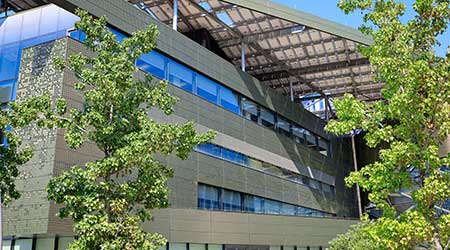Realistic View Of Energy Savings Helps Meet Targets
At this point, it may seem that energy savings take a back seat when renovating a building. The real question is how do you measure the importance of installing an energy saving system in a building? It goes back to what your goals really are. If you want the energy savings associated with a new building, you need to be realistic about how you get there.
System-Level Savings
Providing component based ECMs, such as lights, motors, and controls can be accomplished to some degree, but real savings come from the synergy of a newly designed system. The system has a lot of peripheral components that are required, but are not at the heart of the savings. The fan, motor, VFD, and VAV terminal units may save all the electricity, but you need ductwork, piping, and an air handler to make it all work. There are systems where plugging in a new fan, motor, and VFD may work but more than likely the ductwork may not be designed to allow the installation of VAV terminal units which in turn allow the fan, motor, and VFD to save energy. Likewise, if you have to replace a fan or motor in a 40-year-old air handler (AHU), shouldn't you replace the AHU because the walls and floors are probably rusted out and air leakage is a significant factor?
Once you get past the easy ECMs and focus on the system ECMs — where the real savings exist — first cost, associated costs, and phasing costs seem to really hurt the overall life-cycle cost of energy savings and you quickly understand that you cannot fund a project with energy savings alone. The first thing to consider, as is the case in establishing a baseline energy model, is establishing the real cost of doing nothing with your existing system. What is the real cost to maintain antiquated systems, clean ductwork, install supplemental AC units for under capacity systems, pay utility demand costs for not meeting power factor correction standards, and, ultimately, a replacement cost for your existing system? The new system you installed would have a 30- to 40-year life.
Capture the difference in maintenance cost of the new and existing systems up to the point when you consider replacement cost for the existing system. Identify demand costs in the baseline comparison; these charges can significantly impact the LCCA and payback results. Be realistic with phasing cost; it is real money, but it should be discounted in the LCCA or simple payback if the existing system is being replaced in 10 years and would also have a significant phasing cost.
No matter how detailed you are, it is highly unlikely that energy savings alone will result in a payback period under the guidelines of conventional wisdom such as 10 or 20 years. Understanding where the money is being spent, what portion of it is energy related, what portion is supplemental and what portion is phasing, is useful for facility managers to establish funding parameters.
Stefan Domby, PE, LEED AP, is an associate at RMF Engineering. Domby has significant experience in the design and analysis of mechanical systems serving healthcare, laboratory, institutional, federal, and industrial facilities. He can be reached at stefan.domby@rmf.com.
U.S. Green Building Council
2101 L Street, NW, Suite 500
Washington, DC 20037
1-800-795-1747
Web site: www.usgbc.org
E-mail: info@usgbc.org
CHAIR
George Bandy
Interface
CHAIR-ELECT
Marge Anderson
Energy Center of Wisconsin
IMMEDIATE PAST CHAIR
Allan Skodowski
Transwestern
SECRETARY
Elizabeth Whalen
CalAg LLC
TREASURER
Stuart Carron
ENERGIZE RE LLC
FOUNDING CHAIRMAN
S. Richard Fedrizzi |
Related Topics:














